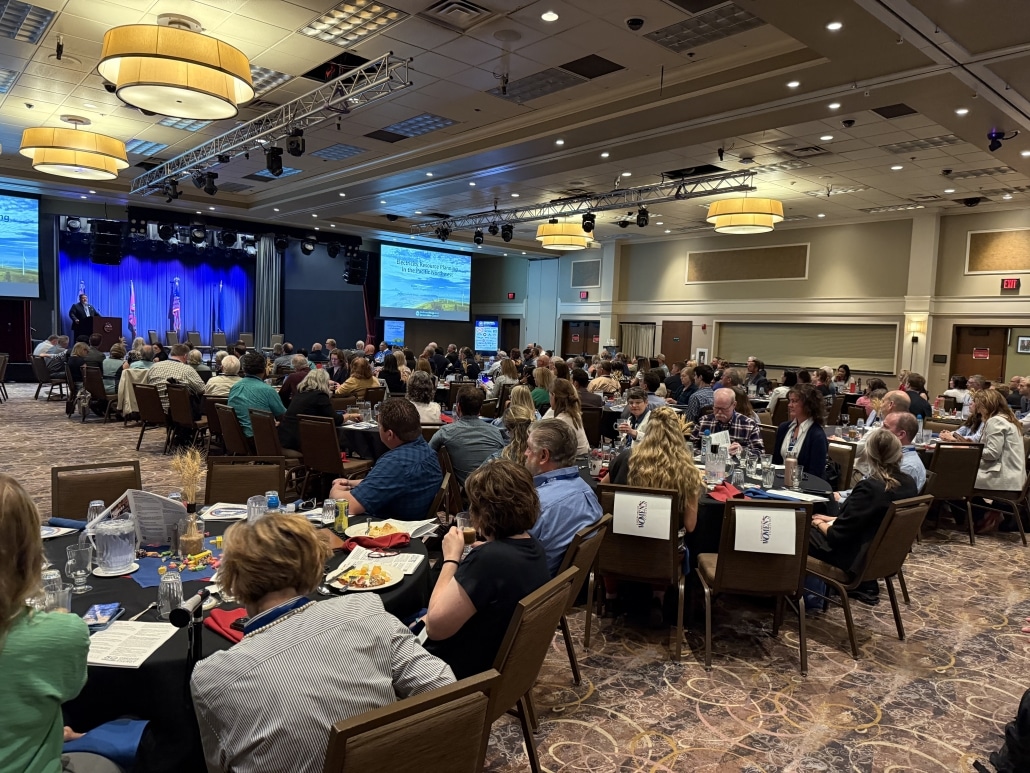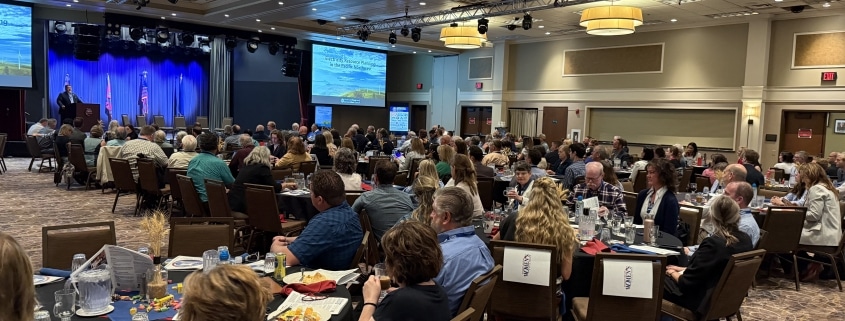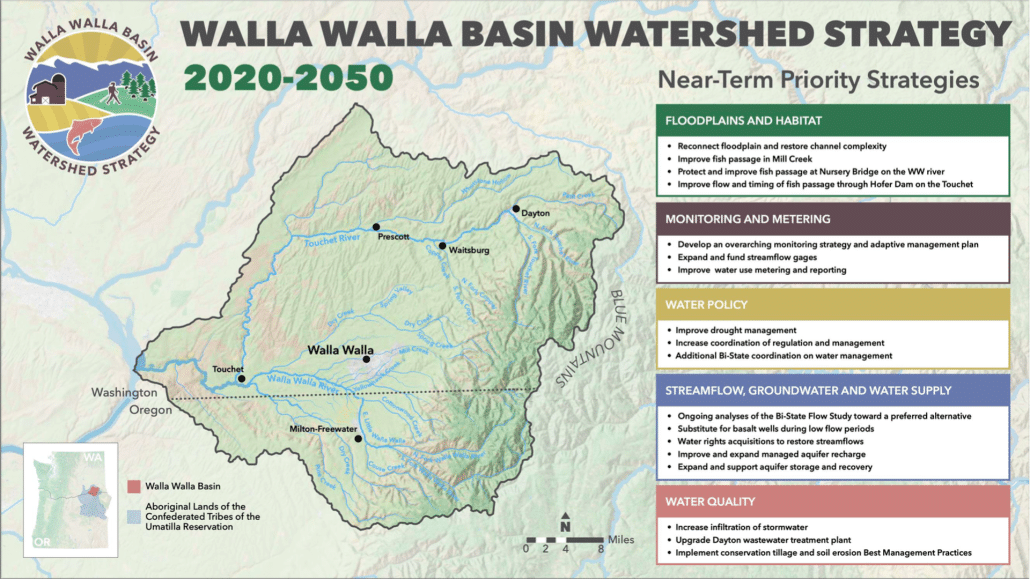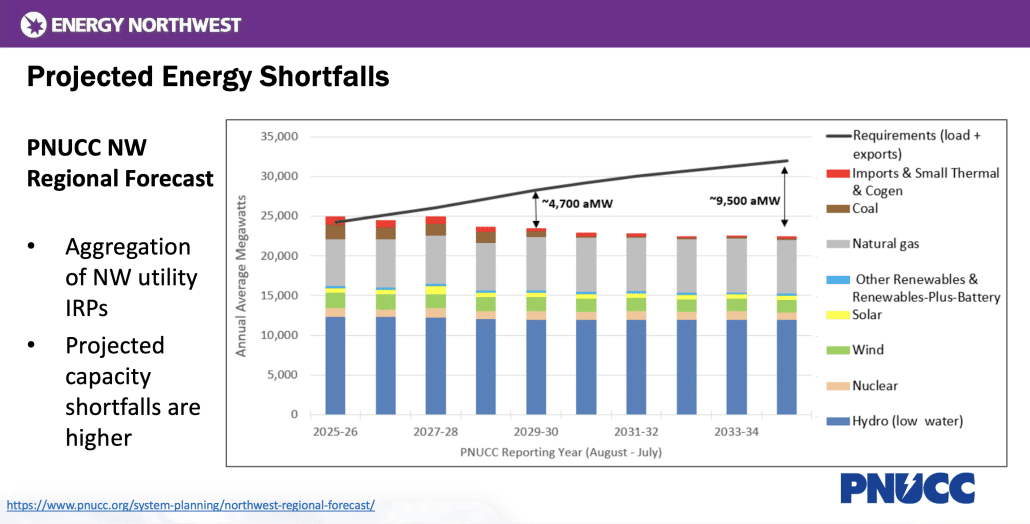A Fresh Look at Eastern Oregon Issues
Eastern Oregon Economic Summit demonstrates collaboration
 The Eastern Oregon Economic Summit has quickly become a must-attend annual event. The venue may be Eastern Oregon, but each year the Summit brings valuable and insightful voices from across the Pacific Northwest to share information and lessons.
The Eastern Oregon Economic Summit has quickly become a must-attend annual event. The venue may be Eastern Oregon, but each year the Summit brings valuable and insightful voices from across the Pacific Northwest to share information and lessons.
This year’s event featured detailed discussions on energy, workforce, and natural resources during regional tours on Thursday, July 24 and panel discussions on Friday, July 25 at Wildhorse Resort & Casino in Pendleton.
The real value of the Summit extends beyond the information shared on stage. Legislators from across the state actively participate in conversations. Panels are intentionally designed to explore the nuance of each topic, while leaders from various industries and agencies connect, exchange ideas, and trade business cards. Importantly, the event keeps a spotlight on issues that matter east of the Cascades.
“What’s going on in Eastern Oregon is relevant to the entire state,” said Oregon Treasurer Elizabeth Steiner.
The Eastern Oregon Women’s Coalition has done an exceptional job of developing the Summit, and Pac/West is pleased to sponsor and support the event with so many great community partners.
Environment and Resilience Thrives with Collaboration
Whether growing food crops or protecting forest resources, experts on natural resources panels emphasized the importance of collaborating to find science-based solutions.
The Walla Walla Basin 2050 Plan — an initiative to improve water supply in the northeast Oregon/southeast Washington region, which serves about 85,000 irrigated acres — only began gaining traction once both states and the Confederated Tribes of the Umatilla Indian Reservation began working together. State legislatures have approved more than $14 million over the next two biennia for studies and restoration projects.
On the production front, Eastern Oregon accounts for 45% of the state’s agricultural economic value. The region’s top five commodities include cattle and dairy, supported by high production of hay and forage, creating an integrated feed production system.
But farms are under severe economic threat, said Austin McClister of the Oregon Farm Bureau. In Oregon, labor costs are 70% higher than the national average, and 69% of farms operate at a net loss. Seven counties saw expenses grow faster than income.
“There is an increase in farm-related income,” McClister said, “but income isn’t keeping up with costs, and farmers are working on a razor-thin margin. They can’t absorb these economic shocks.”
From statewide trade to local farming and food processing, every speaker talked about the way agriculture, the environment, and state policy are interconnected.
J.R. Cook, executive director of the Northeast Oregon Water Association, gave the example of data centers. These centers use a large amount of water to cool their servers, but once the water passes through the building, it is considered “industrial” and can’t be used for irrigation — even though it still tests at the same quality as water from the stream.
Jake Madison, owner of Madison Ranches, said local farms, industrial, and environmental interests all benefit when they work toward “symbiosis.”
“My job is to figure out how to produce more food with less water and fewer nutrients,” he said.
Rep. Bobby Levy (R-Echo) moderated the final panel on forest management and wildfire resilience, which reflected the diversity of roles needed for success, including firefighters, forestry, tribal, restoration, and ranching voices.
Oregon is one of four states with the ability to coordinate and prioritize funding across departments and agencies. Panelists agreed it has one of the best-coordinated wildfire teams in the nation. By maintaining a constant stream of communication and inviting non-governmental organizations like the Oregon Cattlemen’s Association to join their morning debriefs, information can be disseminated to rural and frontier areas much more quickly.
As State Fire Marshal Mariana Ruiz-Temple said, “Wildfire is the greatest equalizer.” The only way to address it is to have everyone at the table working together.
With Energy Future Unclear, Nuclear and Efficiency Explored
Oregon’s ambitious clean energy goals and the challenges facing generation and delivery are often at odds. Chuck Sams III, a Northwest Power and Conservation Council board member, laid out the uncertainties ahead — transmission development, energy costs, weather and climate, and deferred maintenance.
To address these challenges, the 9th Northwest Power Plan is in development with a draft expected by Nov. 1 and a final plan in 2026. Sams emphasized the collaborative process that aims to protect fish and wildlife while meeting significant load growth due to data centers, electric vehicles and other power users.
Janine Benner, director of the Oregon Department of Energy (ODOE), reported that half of the energy used in Oregon is wasted due to inefficiency. Oregonians spent $19.5 billion on energy in 2024, with increases driven by rising power costs, inflation, and wildfire risk. Increasing efficiency is the lowest cost, lowest risk resource at our fingertips, she said.
A draft statewide energy strategy is coming in August.
Nuclear energy is still a divisive issue in Oregon — not to mention prohibited by law since 1980 — but a legislative conversation began last session with two bills that would set up a study and pilot project in Umatilla County. Both bills failed to reach a floor vote, but momentum has begun.
“Even having this panel is a sign of the times,” said Max Woods, ODOE assistant director of nuclear safety and energy security. “I don’t think we’d be having this conversation even a year ago.”
Greg Cullen, vice president of energy services and development for Energy Northwest, said the pathway to carbon-free grid may include nuclear. He pointed to modeling that shows at peak demand days — extreme low and high temperatures — about 7% of wind and 12% of solar is operational. “Nuclear is clean and always on,” he said. “There’s a growing gap between the resources and need.”
There are currently 92 nuclear energy facilities operating and 32 in development in the U.S., including an Amazon-funded Columbia Generating Station project with Energy Northwest in southeast Washington.
The panelists took care to frame their discussion of nuclear energy as informational rather than advocacy. In a setting as high-profile as this, where energy policy intersects with rural development and economic opportunity, the choice to describe nuclear not as a solution but as a subject of inquiry reflects the broader uncertainty — and perhaps the caution — surrounding its role in Oregon’s future.
By placing emphasis on nuclear, the Summit reinforced the very dynamic that continues to challenge Oregon’s clean energy transition: too much attention given to long-horizon, utility-driven solutions, and not enough urgency placed on the tools we already have at hand.
The state’s challenge isn’t a lack of innovation; it’s a lack of competition and execution. A more open energy market, clear procurement benchmarks, and aligned regulatory incentives could do more to reshape Oregon’s energy future in five years than any reexamination of the nuclear ban.
The question isn’t whether we should talk about nuclear — it’s whether we’re ready to act on the solutions already within reach.




